Fermi vs. Cypress in DirectX 11 Modes GPU Test
A lot of time has passed since the official announcement of the new Nvidia GeForce GTX 480 and GeForce GTX 470 video cards based on Fermi chips, but only now we were able to get samples of these video accelerators for our gaming tests. This time we conducted a special generalized test of these cards together with our direct competitors AMD Radeon HD 5850 and Radeon HD 5870 in DirectX 11 modes.

In addition to the DirectX 11 tests, we will compare the new Nvidia flagships with their predecessors in games that support NVIDIA CUDA and PhysX technologies and determine what the purchase of a new generation of video cards will bring to fans of the Californian company. The architecture of these video cards has been described up and down on many resources, but if you want to refresh your memory, then you can familiarize yourself with it on our website . Below are the comparative architectural features of the new video cards in comparison with their competitors in the face of Cypress and their predecessors in the face of the GeForce GTX 2XX:
| Video adapter | Radeon HD 5870 | Radeon HD 5850 | GeForce GTX 480 | GeForce GTX 470 | GeForce GTX 275 | GeForce GTX 285 |
| Core | RV870 | RV870 | GF100 | GF100 | GT200b | GT200b |
| Number of transistors, million pieces | 2154 | 2154 | 3200 | 3200 | 1400 | 1400 |
| Process technology, nm | 40 | 40 | 40 | 40 | 0.055 | 0.055 |
| Core area, sq. mm | 334 | 334 | 530 | 530 | 400 | 400 |
| Number of stream processors | 1600 | 1440 | 480 | 448 | 240 | 240 |
| Number of texture blocks | 80 | 72 | 60 | 56 | 80 | 80 |
| Number of render units | 32 | 32 | 48 | 40 | 28 | 28 |
| Core frequency, MHz | 850 | 725 | 701 | 608 | 633 | 648 |
| Shader domain frequency, MHz | 850 | 725 | 1401 | 1215 | 1404 | 1476 |
| Memory bus, bit | 256 | 256 | 384 | 320 | 448 | 512 |
| Memory type | GDDR5 | GDDR5 | GDDR5 | GDDR5 | GDDR3 | GDDR3 |
| Memory frequency, MHz | 4800 | 4000 | 3696 | 3348 | 2268 | 2484 |
| Memory size, MB | 1024 | 1024 | 1536 | 1280 | 896 | 1024 |
| Supported version of DirectX | eleven | eleven | eleven | eleven | 10 | 10 |
| Interface | PCIe 2.1 | PCIe 2.1 | PCIe 2.0 | PCIe 2.0 | PCIe 2.0 | PCIe 2.0 |
| Declared maximum power consumption, W | 188 | 170 | 250 | 215 | 219 | 183 |
It is immediately clear that the GeForce GTX 480 has a huge advantage over its predecessor GeForce GTX 285 - all architectural characteristics are almost doubled, and the core frequency is even higher than that of the previous flagship. The only thing that overshadows is the reduced number of texture units, which in some situations can have a deplorable effect on the performance of the new champion. The architecture of the new chip turned out to be very complex and at the same time the core area increased noticeably - it is almost 1.6 times larger than that of the competitor and 1.3 times larger than that of the GeForce GTX 285. The heat dissipation of the new cards has increased accordingly. Many Internet resources were very upset by this fact and hastened to transfer it to the fattest minus of the evaluation of new Nvidia products. We, after thinking a little, decided to find a solution to this problem,
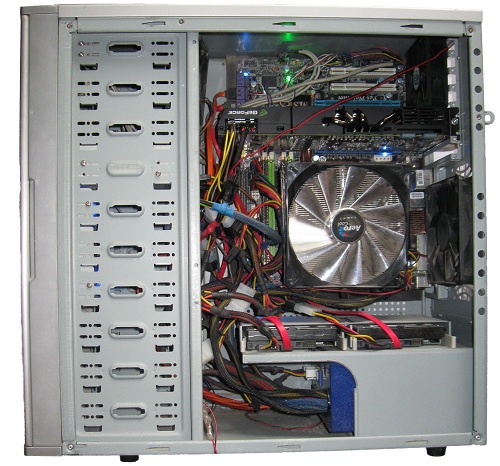
Without hiding, let's say right away that an ordinary cheap case is in no way suitable for the GeForce GTX 480. But if you have money for this dragon, then most likely there will be for a reputable case. We have at our disposal the Aerocool Zero case, made in the BTX standard, and everything that is in it is located in a mirror form from the ATX format. As a result, the video card is located not at the bottom, but under the top. On the one hand, this is a plus - all the main elements of the PC are not heated - the processor, memory, power supply, which are located at the very bottom of the system unit. On the other hand, the entire thermal shock falls on the video card, which creates some difficulties with cooling. To combat the heat of the video card, we placed two fans next to it - one in front of the video card and the other behind it.

Both fans are low-speed, and the noise they create is almost inaudible. As a result of this simple maneuver, the heating of the video card at full load in FurMark decreased from 94 to 88 degrees. When overclocking the card to 835/1670 MHz for the core and up to 3960 MHz for memory, with the voltage raised to 1.05, the maximum warmed up to which the GTX 480 is 92 degrees. At the same time, the turbine speed was absolutely not regulated and was in automatic mode.
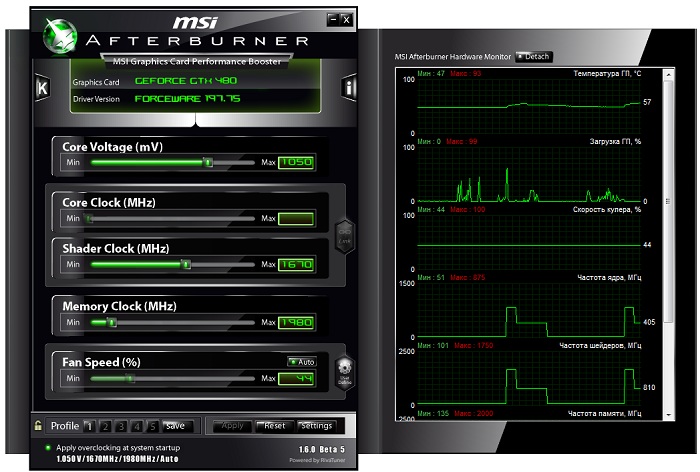
At the same time, the video card worked relatively quietly and its noise in games can be compared with the GeForce GTX 285 - the turbine started up gradually and slowly reached the 60% speed level. In this case, only a slight rustle of the turbine was heard. We applied a similar cooling approach to the GTX 470, as a result of which we managed to achieve fast and silent operation at a frequency of 730/1460 MHz in the core and up to 3570 MHz in memory. Undoubtedly, setting the turbine speed to the maximum will help you squeeze out a few more tens of precious megahertz, but your ears are unlikely to like it ...
Our red-skinned brethren also did not remain out of work and were subject to moderate overclocking. The Radeon HD 5870 was overclocked to 980/5200 MHz, while the Radeon HD5850 was overclocked to almost the same level, namely 970/5000 MHz. As you can see, Radeon cards overclocked almost to the same level, which cannot be said about GeForce 4XX cards - they run equally well, but the frequency limit for stable and quiet operation of the GTX 480 is much higher (probably a more massive cooling system plays a role). Our "oldies" GeForce GTX 285 and GeForce GTX 275 showed more modest overclocking performance and conquered the milestone of 715/1600/1400(2800) MHz and 710/1558/1335(2670) MHz, respectively. Next, we will move on to the test configuration and directly to the tests themselves.
|
Hardware configuration |
|
| CPU |
Intel Core 2 Quad Q9550@ 4.25 GHz 12 MB L2 cache, |
| Motherboard | MSI P45 Platinum 7512 (LGA 775) P45/ICH10R |
| Memory | 4 GB OCZ DDR2-1150 @ 11160, 5-5-5, 2.2V |
| Video cards |
GeForce GTX 275 896 MB |
| HDD | 2 RAID0 Western Digital Caivar WD2500GL 250GB 7200rpm SATA 3Gb/s |
|
System software and drivers |
|
| operating system | Microsoft Windows 7 Ultimate Edition x64 |
| DirectX | DirectX 11 |
| Platform driver | Intel INF Chipset Update Utility 9.1.0.1012 |
| Graphics driver |
Nvidia GeForce/ION Driver Release 197.75 ATI Catalyst 10.4 |
All used video cards were tested for maximum graphics quality by the Fraps program in the most resource-intensive place in the game or by the built-in game benchmark . On many sites, their employees performed tests in 3DMark Vantage, Crysis, Far Cry and other well-known projects. But who cares about performance at the level of 50-100 frames in applications that have long been passed and are not of interest to gamers today and are used only as a form of benchmark. It is much more interesting how the new generation of video cards will show itself in modern games and in graphic modes of the near future.
Therefore, our testing was carried out at our maximum resolution of 1920x1080 with different variations of graphic settings for each game separately. To test the performance of new Fermi video cards in comparison with their competitors in DirectX 11 mode, such games and tests as Stone Giant, Heaven Benchmark v2.0, STALKER Call of Pripyat, Dirt 2, Aliens vs. Predator, Battlefield Bad Company 2 and Metro 2033. Batman Arkham Asylum and Just Cause 2 were used to test the performance of the new Fermi graphics cards against their predecessors.
STALKER Call of Pripyat DirectX 11 GPU test
And the first who came under a hot hand for tests was the game from the Ukrainian developers STALKER Call of Pripyat. This game has become the third product in this series and, to be honest, we have not been able to see a special evolution in graphics compared to the original.

You can find a detailed review of the game at this link. Now we would like to remind you that in the process of testing we abandoned the benchmark provided by the developers and carried out internal gaming testing, which is noticeably different from the synthetic one. Anti-aliasing during testing was set to the maximum level for the game 4X, and anisotropic filtering was set to 16X.
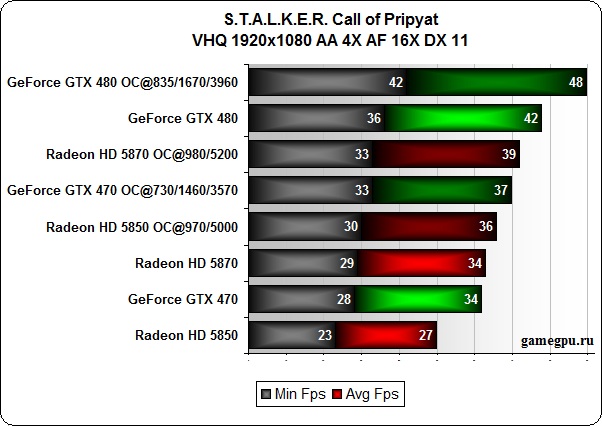
Unlike the benchmark, in the game itself, GeForce GTX 4XX cards show more frame dominance. The GeForce GTX 480 is the undisputed leader, and even without overclocking it overtakes all the "fitted" participants. The GeForce GTX 470, both overclocked and not, shows almost identical performance with the Radeon HD 5870.
Dirt 2 DirectX 11 GPU Benchmark
You can also read a detailed review of Dirt 2 on the pages of our website. In it you can find all the comprehensive information on the performance of other video adapters.
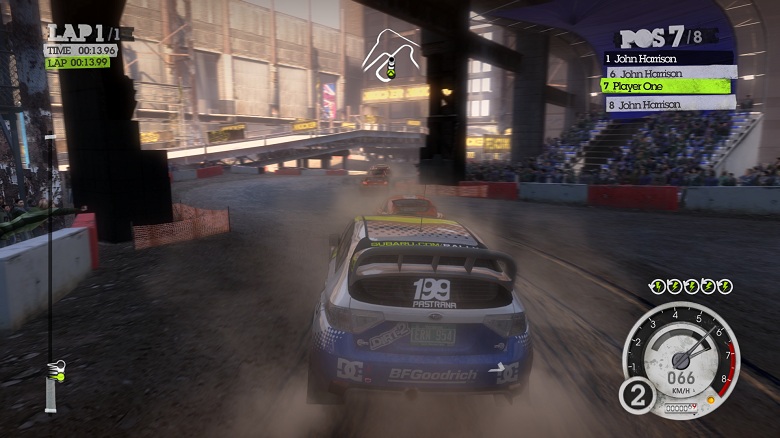
Dirt 2 was practically the first game to implement DirectX 11 support. Of course, its presence can be called formally conditional, but on the other hand, this formality is a little encouraging. Anti-aliasing during the benchmark was set to the maximum level for Radeon video cards 8X, and anisotropic filtering was set to 16X.

Although the performance of the GeForce GTX 480 remained unattainable, AMD cards still managed to outperform the competitor represented by the GeForce GTX 470 during overclocking and show a formal superiority...
Aliens vs. Predator DirectX 11 GPU Benchmark
Aliens vs. Predator is another game that was released under the auspices of AMD. If you have not yet read our review, you can safely read it at the following link.
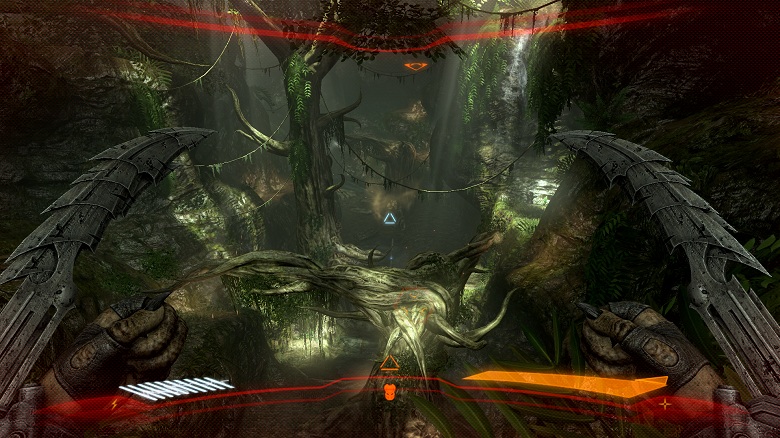
In general, the game came out not very voracious. But she had a great interest in video memory, and even cards with 1 gigabyte from time to time had to suffer from a lack of it. With the release of new Nvidia cards that have increased video memory, this trend changed for the better and slowdowns caused by lack of memory were not observed. During testing, anti-aliasing was again set to 8X for games, and anisotropic filtering was set to 16X.
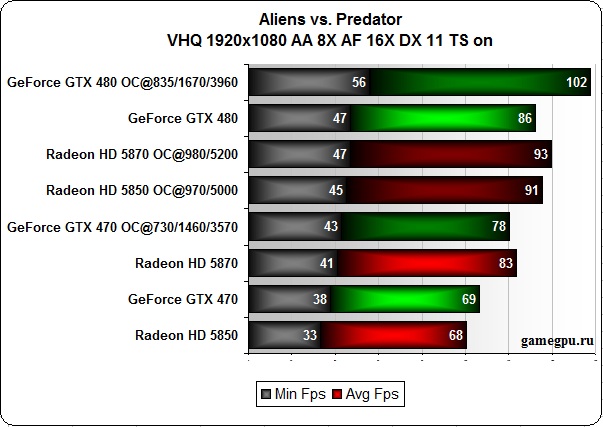
This is where overclocking helps the Radeon HD 5870 overtake its non-overclocked competitor in the face of the GeForce GTX 480. But overclocking the latter allows it to remain the leader. As in Dirt 2, the GeForce GTX 470 without overclocking shows performance between the Radeon HD 5850 and Radeon HD 5870, but with the latter overclocked, it barely catches up with them.
Battlefield Bad Company 2 Direct X 11 GPU Benchmark
You can learn more about Battlefield Bad Company 2 at this link. Battlefield Bad Company 2 is quite a good and exciting shooter today. And in combination with an unsurpassed network mode and the presence of newfangled technologies, it can appeal to quite a few gamers.
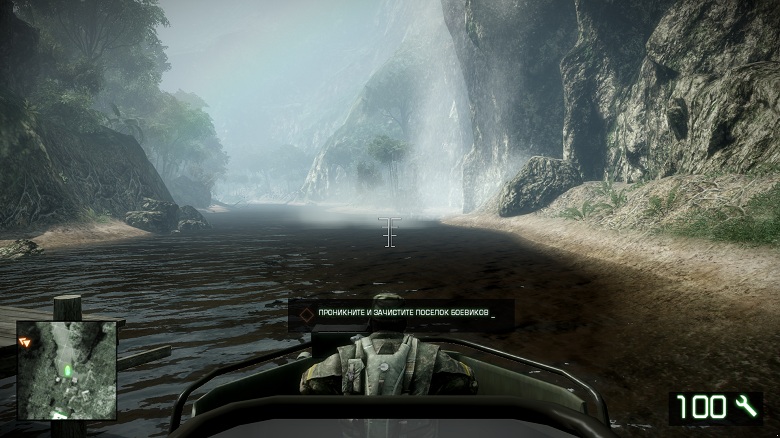
The test in Battlefield Bad Company 2 took place, as always, in the most resource-intensive place in the game when crossing a waterfall on a boat. Some foreign resources also referred this moment as the most resource-intensive place in the game. Antialiasing during the test was set to 8X, and anisotropic filtering was set to 16X.
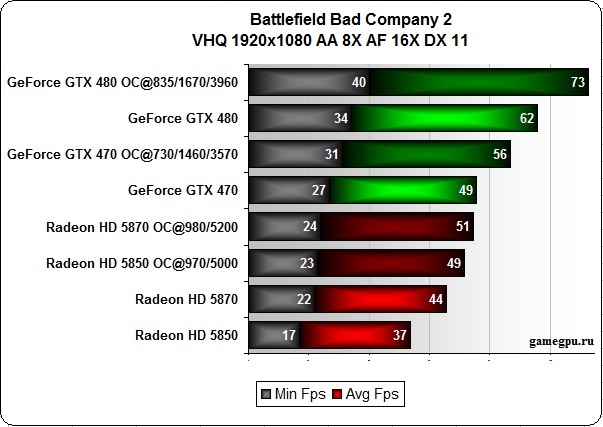
In many reviews, you will notice that the Radeon cards are ahead, but this is where the GeForce shows more stable and higher FPS. An unconditional victory for the Fermi generation.
Metro 2033 DirectX 11 GPU test
Here it is, another achievement of our compatriots. No one has yet been able to outdo Crysis in terms of manufacturability and slowness. However, we will not go into details - you can read everything that interests you.
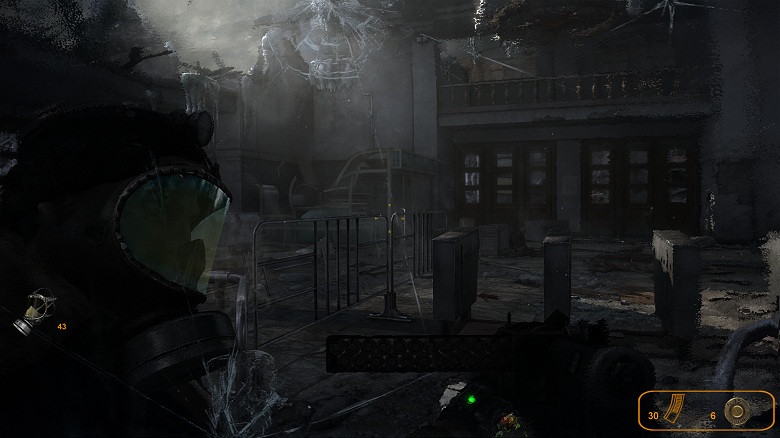
Metro 2033 mostly slows down in scenes that use a lot of light sources. And the activation of DOF adds fuel to the fire and brings all modern video accelerators to their knees. Anti-aliasing was set to AAA during tests, and anisotropic filtering was set to 16X. Let's get straight to the results...
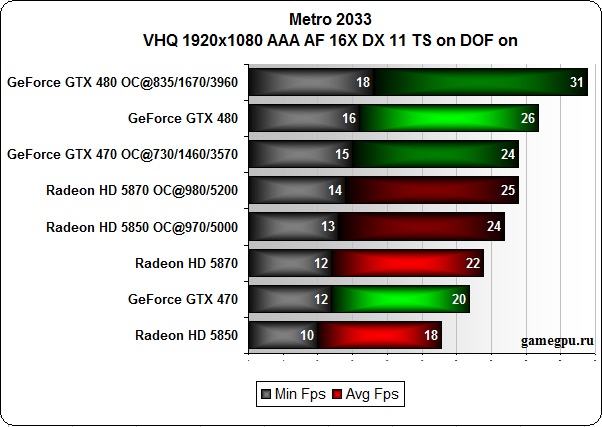
The FPS of all video cards can hardly be called comfortable, but when overclocking the GTX 480, you can feel more or less acceptable playability. I was very pleased with the GTX 470, which, when overclocked, overtook the overclocked duet of the Radeon HD 5850 and Radeon HD 5870.
Stone Giant Direct X 11 GPU Benchmark
Now it's time for synthetics. The engine used in Stone Giant is not yet licensed and is under development. As a matter of fact, there is no bench as such, and we had to manually fly and measure frames.
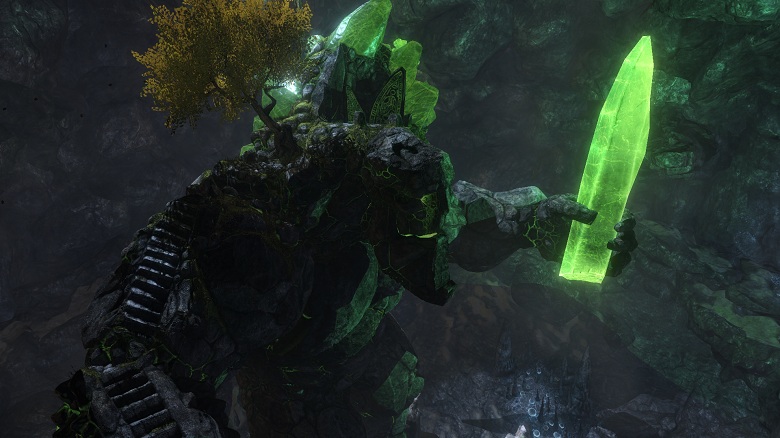
The tassel level during the test was turned to the maximum and the DOF function was turned on. There are practically no settings in the test and everything was set to the maximum with a single point.
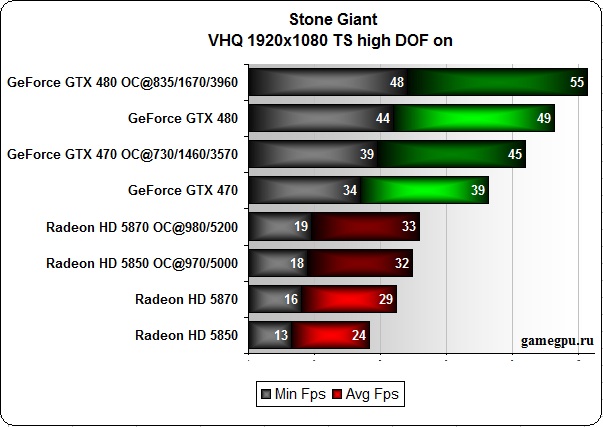
Nvidia cards have shown simply stunning performance. Their minimum FPS was higher than the maximum on Radeon cards.
Heaven Benchmark v2.0 Direct X 11 GPU test
Heaven Benchmark is the first and only measure of video cards that support Direct X 11 to date. The second version has been slightly modified compared to the first. New tassel modes and objects have been added.
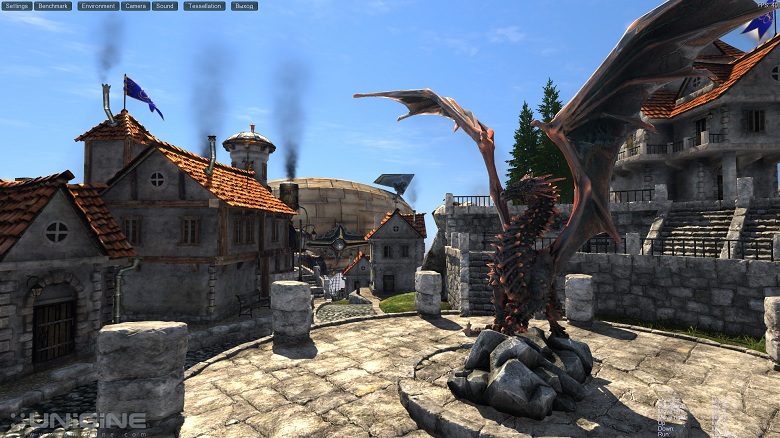
Tasselation during the test was set to the normal level - we considered the extreme mode somewhat redundant and oversaturated. Anti-aliasing was not enabled during the tests, and anisotropic filtering was set at 4X.
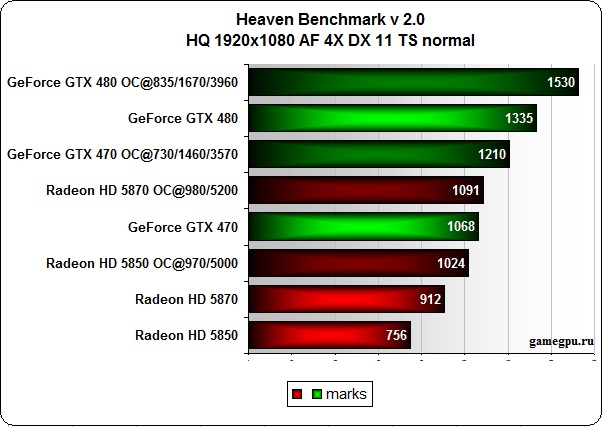
And again, in synthetics, Nvidia cards are ahead. Overclocking the Radeon HD 5870 allows you to scratch out a victory over the GTX 470, but only at the latter's native frequencies ... Well, we see a small advantage of the GeForce card in games and a huge one in synthetics, although in the future, with the release of new games for Direct X 11, the situation is quite can change.
Batman Arkham Asylum NVIDIA PhysX GPU Benchmark
Now let's test Fermi cards in applications specially adapted for Nvidia cards. Their prominent representatives are Batman Arkham Asylum and Just Cause 2. The first is full of physical effects, and the second allows you to reveal the hidden effects of graphic calculations. Radeon cards did not take part in these tests due to their incompetence.
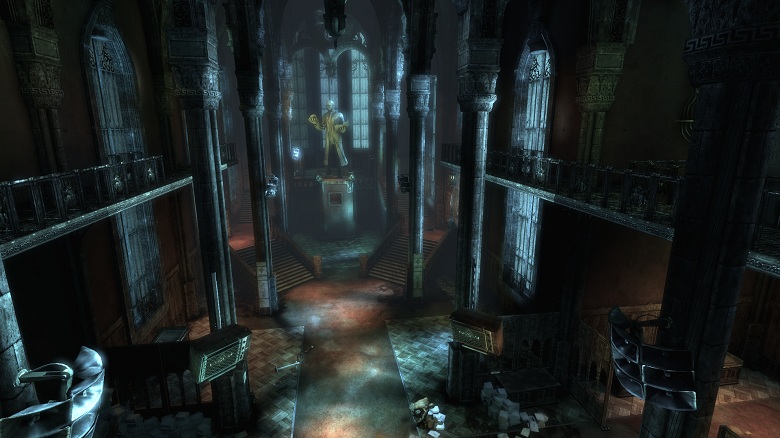
Batman Arkham Asylum is considered by many resources to be one of the best games of the past year. You can find out more about this here. In the Batman Arkham Asylum benchmark, all settings were turned to the maximum, anti-aliasing was set to 16QX, and physics effects were set to high.

The new generation of video cards performed quite loudly and was able to provide the minimum acceptable FPS of 25 frames. With overclocking, the GTX 285 and GeForce GTX 275 can show a more or less usable result and approach quite normal playability.
Just Cause 2 NVIDIA CUDA GPU test
Just Cause 2 is one of the most beautiful and technological games to date. You can read more about the description of all the technologies used and the quality of the graphic design in this article.
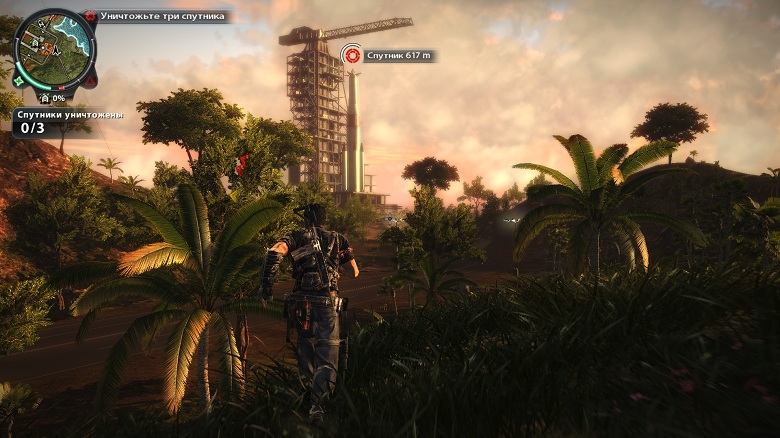
The game was tuned for Nvidia computing power, but at that time even the GTX 2XX series of cards could not provide acceptable performance in this game. With the release of Fermi, the situation should have improved for the better, and the chart below is a good example of this. In Just Cause 2, all settings were turned to maximum, anisotropy and anti-aliasing were turned on at 16X. The Bokeh filter effect and the water surface simulation were properly activated.

The results here are much more interesting than in Batman Arkham Asylum. The GeForce GTX 480 and GeForce GTX 470 delivered unrivaled performance in both non-overclocked and overclocked environments, and are the most optimal cards for this game.
Our review is over, our readers have seen the alignment of forces and will be able to form their own opinion about any tested video card. We can state a striking fact - cards based on Fermi are quite competitive. They demonstrate excellent overclocking potential and confidently compete with their competitors. We were able to roll back one stone from the Nvidia garden, namely, to achieve moderate heating and noise, as a result of which it could become quite comfortable and stopped straining your ears. The only problem is power consumption. For a normal power supply, you will have to stock up on high-quality power supplies with a power of 600 W or more. Now let's draw conclusions about each card separately.
The GeForce GTX 285 and GeForce GTX 275 are a thing of the past and almost pointless to buy if you have no other choice or a minimum of funds (only relevant for the GeForce GTX 285 model, which is almost on par with the GeForce GTX 275).
The Radeon HD 5850 is quite an excellent graphics card. It has excellent performance, and after overclocking it even catches up with the overclocked Radeon HD 5870. Due to its speed characteristics, power consumption and low noise level, the card will become an indispensable purchase for budget-conscious enthusiasts.
The Radeon HD 5870 is AMD's current single-chip flagship. Buying this video card is quite a controversial decision. AMD itself could not even imagine what a pig it had planted for itself in the face of the Radeon HD 5850 by releasing it to the masses. The difference of $100, which is more than compensated by uncomplicated overclocking, is unjustified.
The GeForce GTX 470 is, in our opinion, the best product to buy. As we see from today's test, it often outperforms its rivals from the ATI team during overclocking and comes close to its older sister. And although its cost often reaches the $400 mark, which is $50 higher than the recommended one, it is more attractive than the Radeon HD 5870.
The GeForce GTX 480 is the current single-chip champion. Great purchase if you have the money for it. The card feels very confident in modern games (excluding Metro 2033), has all the bells and whistles due to Nvidia products and is a good start for the future. The only problem is the price, which differs from the recommended $500 by $100-200. We recommend that you wait until the cards flood our market and the price stops biting.
For now, that's all. Wait for the release of new games and new reviews featuring modern flagships. Then we will draw separate conclusions for each game.
See you.



